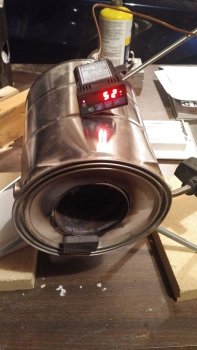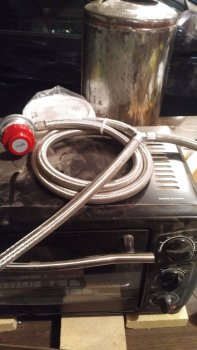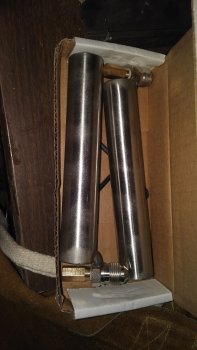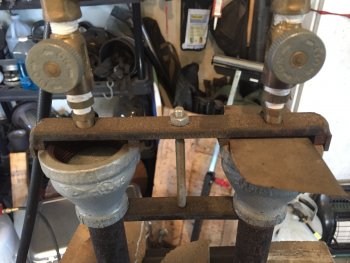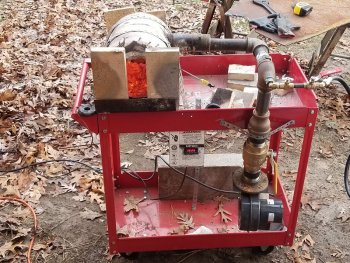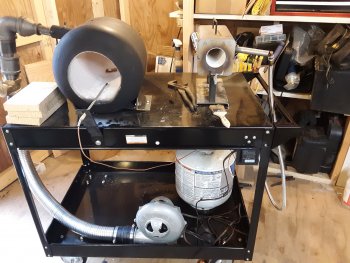I'll give my quick $0.02 on burners. I mentioned earlier that I was a fan of the forced air or blown-style burners.
Venturi burners tend to be picky and fussy. They work best with a certain size forge. Oftentimes they only get hot enough if your forge is very well insulated so you see people struggling to get to welding heat. They can be hard to get the neutral/reducing atmosphere you might want in your forge. The better ones have air chokes that basically allow you to cover up some of the hole to lower the amount of air it pulls in. They dont work well if you are at high elevation because of the lower oxygen in the air. Also, it can be a bit of a challenge to make your own venturi and get it to burn properly. If I was going to go with a venturi, I'd buy a t-rex from hybrid burners (but these are quite pricey). They are really nice burners and I'd be confident that it would be relatively hassle-free. All that said, once you get your venturi tuned properly and running how you want in your forge, it's pretty much set it, and forget it.
A blown burner is extremely simple to construct. There's no tiny orifices to get aligned or clogged. It's basically just plain pipe run into your forge with a blower and a propane line hooked up. Typically the propane would have a needle valve and you'd either use the damper on the blower to block the intake or put in an air gate valve afterwords. Running a blown burner is sorta like getting an oxy-acetylene rig going. You adjust your gas to whatever you want and you adjust your air to whatever you want. In that way it is 100% adjustable to whatever atmosphere you want in your forge. It also doesn't care what size your forge is or how well it's insulated. They get hot, really hot. I've never heard of a blown burner not hitting welding temperature. The down side to blown burners is that you have to have electricity to run the blower. You can have a multitude of forges in your shop and use the same blown burner for every one by just moving it around. Most of the expense with these is getting a proper blower. The only issue I've had with blown burners is they can be tricky sometimes to get running at a lower temperature.
On another note, most bladesmiths like to have their burners come in at a tangent to the inside chamber. This causes the flame to swirl inside the forge which reduces the hot spot given off by the burner and gives you a more even heat inside your forge.

